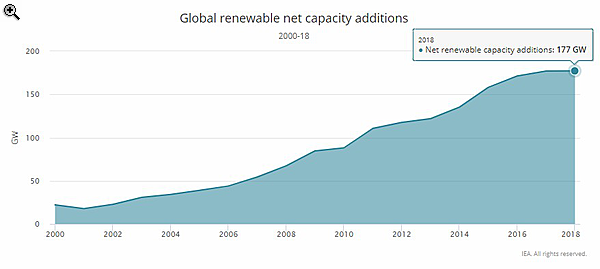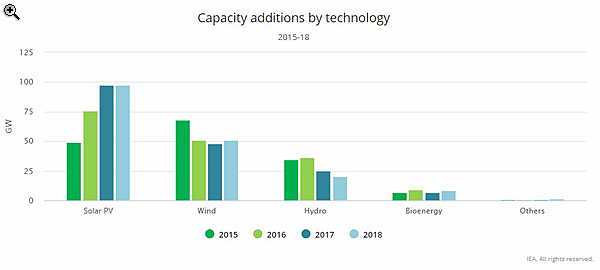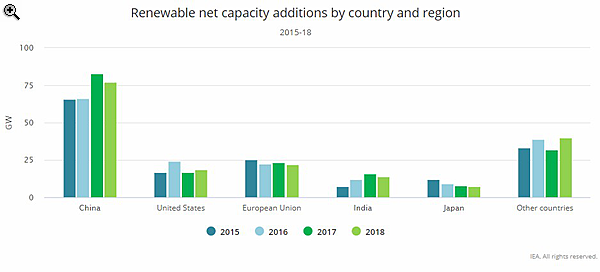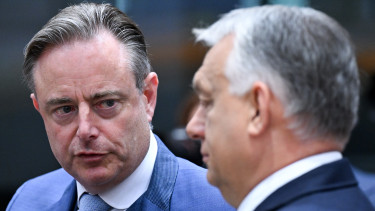Economy
Renewable power capacity stalls for 1st time since turn of millennium
The current situation and prospects of solar energy in Hungary, including changes to the regulatory environment will also be on the agenda of the Portfolio Clean Energy & Disruptive Trend Summit 2019 conference on 4 June. It’s not too late to register!
Last year was the first time since 2001 that growth in renewable power capacity failed to increase year on year. New net capacity from solar PV, wind, hydro, bioenergy, and other renewable power sources increased by about 180 Gigawatts (GW) in 2018, the same as the previous year, according to the International Energy Agency’s latest data.
That’s only around 60% of the net additions needed each year to meet long-term climate goals.
Renewables have a major role to play in curbing global emissions. Renewable capacity additions need to grow by over 300 GW on average each year between 2018 and 2030 to reach the goals of the Paris Agreement, according to the IEA’s Sustainable Development Scenario (SDS).

Since 2015, global solar PV’s exponential growth had been compensating for slower increases in wind and hydropower. But solar PV’s growth flattened in 2018, adding 97 GW of capacity and falling short of expectations it would surpass the symbolic 100 GW mark.

Capacity additions in the European Union, the second-largest market for renewables, saw a slight decline. Solar PV grew compared with the previous year, while wind additions slowed down. Policy transition challenges and changing renewable incentives resulted in slower growth of onshore wind in India and of solar PV in Japan.
Renewable capacity expansion accelerated in many emerging economies and developing countries in the Middle East, North Africa and parts of Asia, led by wind and solar PV as a result of rapid cost declines.


The current situation and prospects of solar energy in Hungary, including changes to the regulatory environment will also be on the agenda of the Portfolio Clean Energy & Disruptive Trend Summit 2019 conference on 4 June. It’s not too late to register!>
Cover photo by Shutterstock
Cover photo by Shutterstock
More in Economy
December 03, 2025 16:12
Manual workers can now earn up to HUF 1 million a month
It was only a dream just a few years ago
December 03, 2025 15:52
Thanks, Home Start: Hungarians have never borrowed so much before
But it's not all plain sailing: behind the records lies a pile-up of loans
December 03, 2025 12:30
Government receives 24-point proposal package: economists say this is what the economy needs
Hungarian Economic Association sens detailed recommendations to the cabinet
December 03, 2025 08:56
This is how many guest workers will be allowed in Hungary in 2026
Economy Minister reaches decision
December 02, 2025 13:54
Hungarian section of Budapest–Belgrade railway line may be handed over in February
Major improvements are coming to the HÉV, but there is no money for the stations
December 02, 2025 11:40
Hungary receives disappointing forecasts
GDP growth will be sluggish
LATEST NEWS










